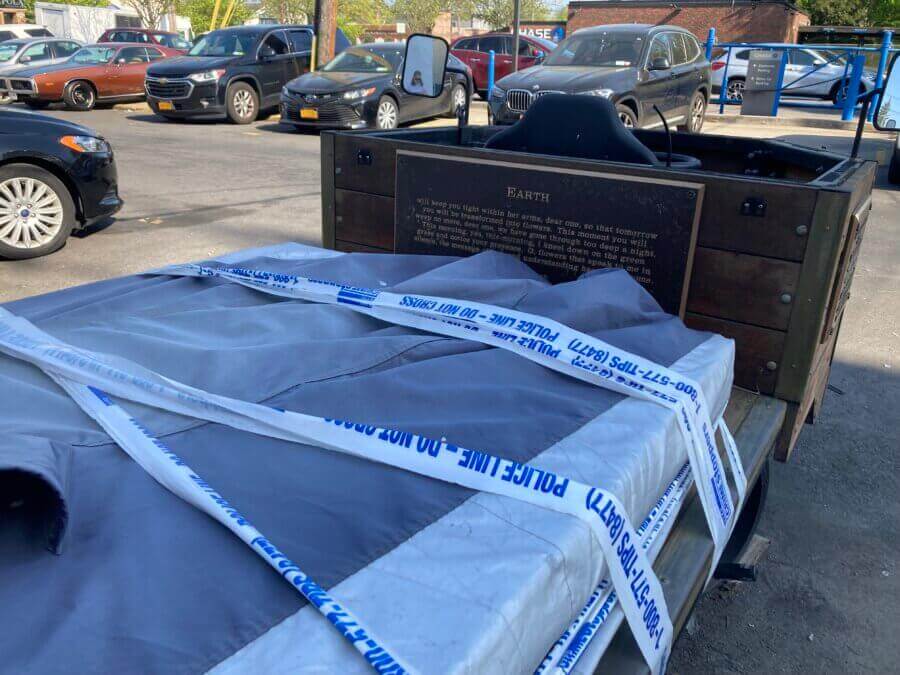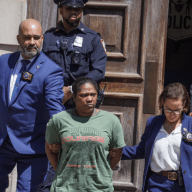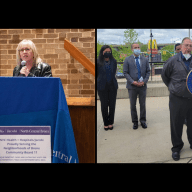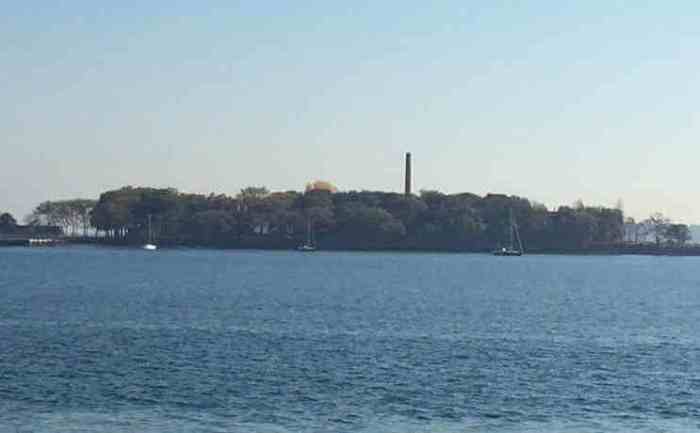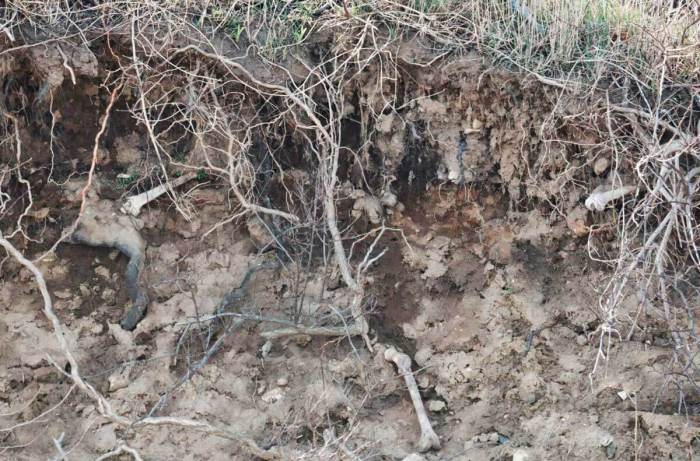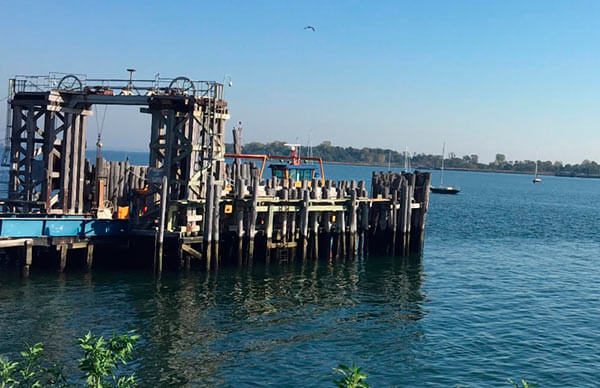Thirty years after his death, Elsie Soto finally gets to give her father a memorial service.
Soto has been campaigning for the city to place a bereavement stone on Hart Island for the better part of the past year — an initiative she says will finally give New Yorkers who are buried on the island, including her father, recognition. And after a memorial walk in Central Park planned for Sunday, the seven-foot tall, four-foot wide granite stone will be transported Tuesday out to the island at long last.
After running into bureaucratic roadblocks trying to get the stone out to Hart Island, the city approved the measure in March. According to a spokesperson from the NYC Department of Parks and Recreation, the memorial stone will be temporarily placed at the gazebo close to the entrance of the island, with the intent to get approval from the city Public Design Commission for permanent placement. NYC Parks has managed Hart Island since 2019 when it took it over from the Department of Corrections.
“Something that I always felt was necessary was a meaningful, respectable, dignified memorial,” Soto said. “We didn’t make these mistakes, but it doesn’t mean that we can’t right the wrongs of the past.”
Hart Island, which sits off the coast of City Island in the Bronx, is New York City’s mass public cemetery that serves as a final resting place for more than 1 million other New Yorkers. The majority of those buried there either “died indigent” or of epidemic or pandemic diseases, or their bodies went unclaimed after their death.
According to City Council data, the number of burials in the late 1980s through the early 1990s “increased markedly” — coinciding with the AIDS epidemic. Even more recently, officials were scrambling to make room for New Yorkers who died of COVID-19. A vast majority of the 1 million people who are buried on Hart Island were placed in unmarked graves, so many people have trouble locating their loved ones’ specific plots to this day.
When Soto’s father died from AIDS-related complications in 1993, she was just 9 years old. Back then, because of the nature of his death and how little medical personnel knew about the spread of the disease, she said there was a negative perception associated with his passing.
Soto’s family didn’t have a funeral for her father, which she said stunted her bereavement process as a child. Her dad’s body ended up in an unmarked grave on Hart Island, a grave that took Soto 20 years to find. But now, after three decades, she said she finally gets to give her dad the dignified memorial he deserves when she accompanies NYC Parks to Hart Island on Tuesday.
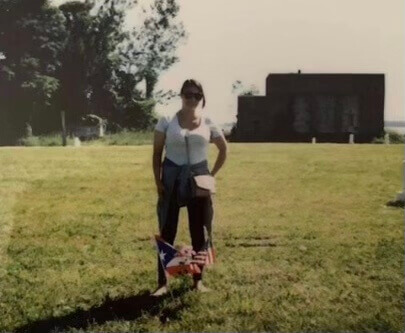
“This is truly going to be the homegoing service that a lot of us weren’t able to give,” she said. “A lot of us were kids at the time, so we didn’t have any control over the circumstances that we were given.”
The Hart Island Touchstone Coalition, a group of advocates that Soto serves as the NYC coordinator for, received the bereavement stone with the words “Global Pandemics; Touchstone for Humanity” from the Peace Abbey Foundation in September 2022. The Massachusetts nonprofit aims to create and install public works of art that promote peace.
Soto said the donation has helped to dispel negative stereotypes about New Yorkers buried on the island. And after the city approved the stone for temporary placement on the island earlier this spring, she said she felt gratified that more people were deeming the cemetery worthy.
Soto said she went to see the stone this week at an auto repair shop in Throggs Neck, where mechanics are repairing the stone’s trailer tires and polishing the trailer’s wood.
“It’s a ton of granite, but it felt so soft. It felt so comforting,” she said. “I think when people really get to see it and really get to touch it and then print their hands on the stone, they can truly appreciate the magnitude of healing that it has.”
While planning for her dad’s memorial service, Soto said she’s been emotional. Right now she’s in the process of choosing music to play at his gravesite that she said will “represent the person that he was” — which was one of many in the Latino community who was impacted by the HIV/AIDS epidemic in the 1980s and ‘90s.
After all this, Soto said she’s ready to break more negative health care stigmas. She’s currently studying public health, which she said she hopes will equip her to continue advocacy work in the future.
From this process she said she’s gained what she describes as a new family of people whose loved ones, for one reason or another, ended up on the island. And the bereavement stone, she said, is symbolic of that support system.
“Together we are a family,” she said. “It’s for everyone. It’s not just for my dad, not just for AIDS, it’s also for COVID and any type of epidemic that someone has faced that has led them to Hart Island.”
Reach Camille Botello at cbotello@schnepsmedia.com. For more coverage, follow us on Twitter, Facebook and Instagram @bronxtimes

